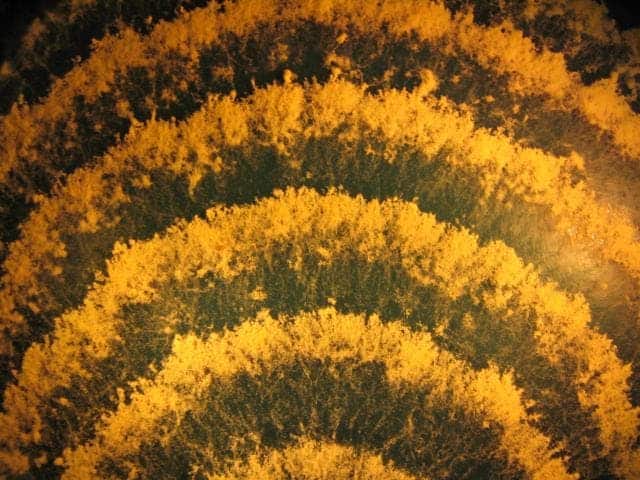A study of a strain of red bread mold could revolutionize our rechargeable battery technology. The paper’s findings could be the first step towards producing sustainable electrochemical materials.
That yucky slimy brick-red stuff that grows on your bread (if you happen to have bread that’s a few weeks old lying around un-microwaved) might, at first sight, seem not any good to anyone. Ever. But you’d be wrong. Known as Neurospora crassa, scientists have recently shown that this fungus can take manganese from its food and tie it into mineral composites with properties that lend well to battery-making.
“We have made electrochemically active materials using a fungal manganese biomineralization process,” says Geoffrey Gadd of the University of Dundee in Scotland.
“The electrochemical properties of the carbonized fungal biomass-mineral composite were tested in a supercapacitor and a lithium-ion battery, and it [the composite] was found to have excellent electrochemical properties. This system therefore suggests a novel biotechnological method for the preparation of sustainable electrochemical materials.”
Gadd and his colleagues have worked with fungi before, studying how they transform metal and other elements’ atoms in surprising (and often very useful) ways. Their earlier work shows how fungi can be used to fixate toxic lead and uranium compounds, for example. That research had them wondering whether the fungi could offer a useful method for the preparation of novel electrochemical materials, too.
“We had the idea that the decomposition of such biomineralized carbonates into oxides might provide a novel source of metal oxides that have significant electrochemical properties,” Gadd says.
For the study, Gadd and his team incubated N. Crassa in a medium enriched in urea and manganese chloride (MnCl2). The long, branching fungal filaments (known as hyphae) became either biomineralized with or enevloped by minerals of various compositions. After heat-treating the fungus, the resulting mixture of carbonized biomass and manganese oxides were shown to have ideal electrochemical properties for use in supercapacitators (lithium-ion batteries).
“We were surprised that the prepared biomass-Mn oxide composite performed so well,” Gadd says.
Compared to other attempts to incorporate manganese oxides in lithium-ion batteries, Gadd’s biomass-mineral composite “showed an excellent cycling stability and more than 90% capacity was retained after 200 cycles,” he says.
Gadd’s team is the first to prove the effectiveness of biosynthesizing active electrode material using fungal mineralization processes. Gadd says the next step is to explore the use of fungi in producing potentially useful metal carbonates. They’re also interested in finding fungal processes for valuable or scarce metal recovery in other chemical forms.
The full paper, titled “Fungal Biomineralization of Manganese as a Novel Source of Electrochemical Materials” has been published online in the journal Current Biology and can be read here.










